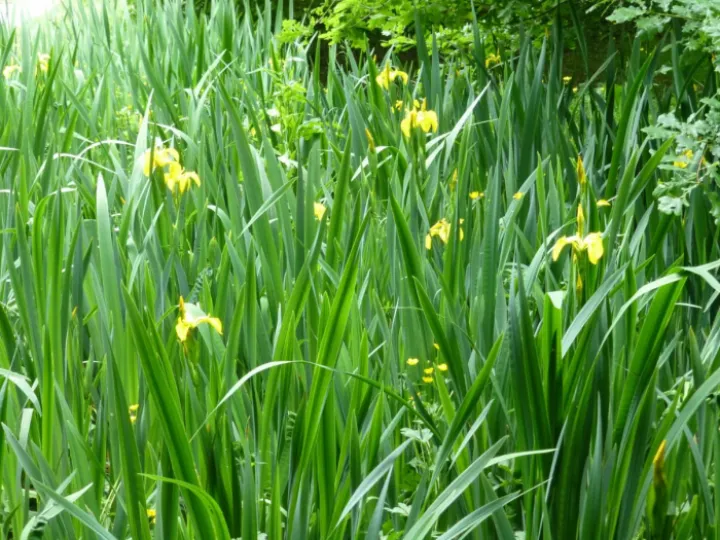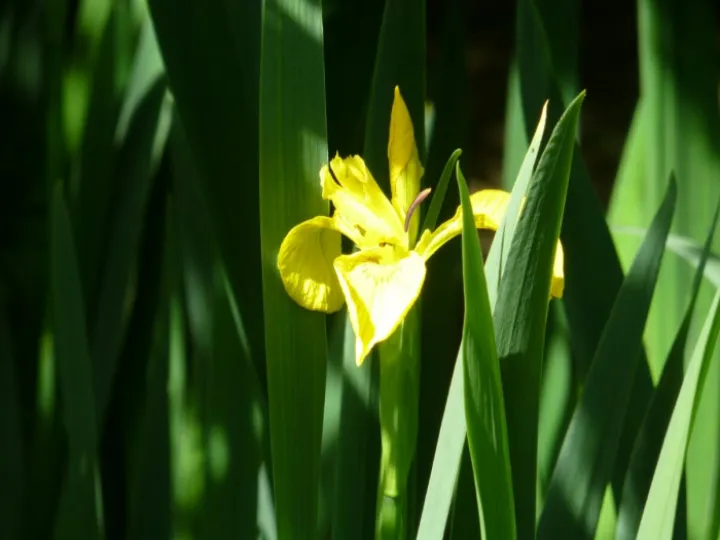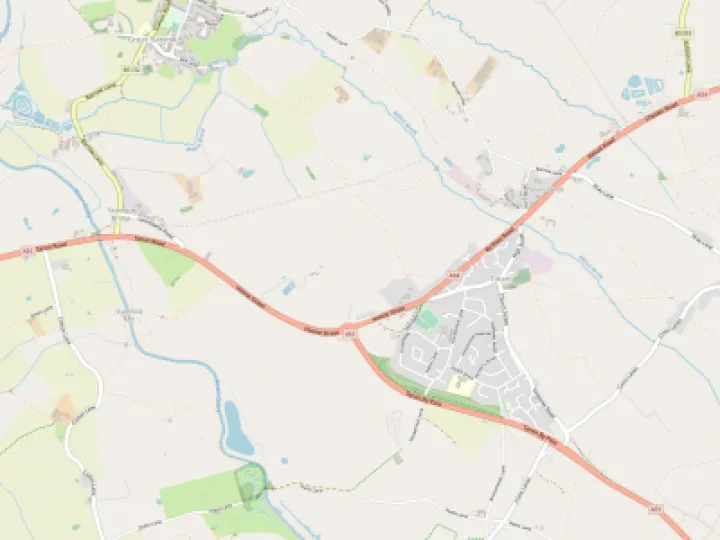Tarvin Community Woodland Flowers.
Yellow Flag Iris
(Iris pseudacorus)
One of the many things which the Trustees found that we could not take for granted in the woodland turned out to be the drainage. The land may have been fields before the construction of the A51 Tarvin By-Pass but, once the road was built, there was suddenly a huge area into which rain could no longer percolate. The engineers had to take the water which drained off that area away somewhere and so, for the most part, it was diverted into drains which pass under the land which is now our woodland. Some of it, however, just seeps downward from the elevated road and has resulted in our having a number of quite wet and muddy patches. These are perfect for our flag irises.
Yellow flag, yellow iris, or water flag iris love damp or wet places and can live even while being partly immersed in water. The plants sprout from very swollen horizontal stems that grow underground. Called rhizomes, these fat stems act as storage for the plant, enabling starches, proteins, and other nutrients to be locked away until needed, for instance for re-growth after the plant has died back for the winter. Yellow iris is an extremely hardy plant that survives winter very well, with the cold actually helping to condition the plant's growth. Its lifespan can reach anywhere up to 20 years and so it is clearly well-adapted for life in our woodland.
In past times, the rhizomes were used as an herbal remedy, most often as an emetic (a substance used to induce vomiting.) They can also be used to make both a black dye and a black ink. Increasingly, Flag Iris plants are being used to help with water treatment, since they have the ability to take up poisonous heavy metals through the roots which grow out from the rhizome itself.
In the woodland, the Flags are also a very useful plant for our pollinating insects. It was rated in second place for per-day nectar production per-flower in a survey conducted by the AgriLand project. However, its flowering period is not lengthy and so other plants overall play a more important role across the entire year.
The flower is formed from three magnificent yellow petals and it is this shape that leads some people to claim that the yellow iris is the original 'fleur-de-lis' – a common symbol of heraldry. In the United Kingdom, a fleur-de-lis has appeared in the official arms of the Norroy King of Arms for hundreds of years. The flower was also believed to avert evil, which is why it was hung in bunches outside doors on the Feast of Corpus Christi in Ireland.
Having wet and muddy area could be a real problem within the woodland. However, they do say that there is a plant for every place and our Flag Irises certainly seem to enjoy their damp spots alongside the woodland pathway. They really are a beautiful flower. Do go for a walk through the woodland behind the school, so that you can see them. They will reward your efforts!
(The two photographs of our own Flag Irises were taken by John Daines. Thank you, John.)
Quick Links
Get In Touch
TarvinOnline is powered by our active community.
Please send us your news and views.






